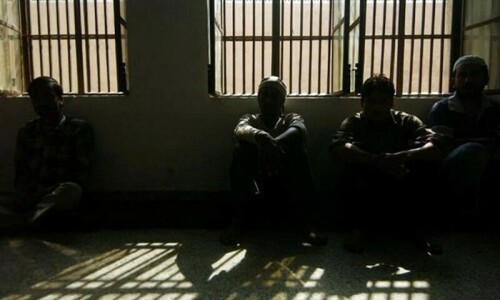“THIS time there will be no mistake.” These are the chilling words that led Twitter to ban an account reportedly belonging to Ehsanullah Ehsan, a leader and spokesperson for the Tehreek-i-Taliban Pakistan (TTP). The clampdown came after he threatened Malala Yousafzai, and she responded with a tweet asking how Ehsan escaped from state custody and was now at liberty to make such remarks (a spokesman for the prime minister said the account was fake; the BBC reported otherwise).
This is a nightmarish back-to-the-future scenario. Nine years on, same perpetrator, same target, same fumbling state response. Ehsanullah’s threat is the latest of many warning signs that Pakistan’s battle with violent extremism is far from over. Indeed, the coming months and years may again see an increase in the domestic terrorism that gripped this country for over a decade.
Writing in the CTC Sentinel, Hassan Abbas highlights signs of a resurgence of violent extremism and domestic militancy. He points to the reorganisation of the TTP, including the reunification of several splinter groups in August under the leadership of Noor Wali Mehsud. The number of attacks against tribal leaders in border regions is also increasing. This was the modus operandi previously deployed by the TTP to create a power vacuum before seizing control.
Regional developments are also creating conditions for violent extremism. Across our eastern border, the entrenchment of anti-Muslim, Hindu nationalist fervour is providing fodder for Kashmir-focused groups.
More is needed than a securitised response.
To our west, militancy seems likely to persist, more so given recent setbacks in the Afghan peace talks. In the short term, the continuation of the Afghan conflict will reduce the likelihood of several thousand militants returning to Pakistan, and delay a domestic security crisis. But regional militant networks and infrastructure will endure, and cross-border attacks will remain a challenge. Militant infighting in the Afghan context — between the Taliban and the militant Islamic State group, for example — will also have a spillover effect in Pakistan as rival groups shore up allies.
Middle Eastern dynamics are also fuelling this shift. US attempts to revive engagement with Iran, including revisiting the nuclear agreement, and Washington’s hard line on Saudi Arabia’s rights record, will deepen regional fault lines: Riyadh versus Tehran, Sunni versus Shia. This always has a ripple effect in Pakistan in the form of increased sectarian violence. The uptick is already evident in last month’s attack on Hazara miners, and last year’s virulent anti-Shia street protests.
Other drivers include the timelines of Pakistan’s FATF grey-listing, which has led to a crackdown on illicit financial flows that militant groups rely on. The government is optimistic that it will be delisted later this year. Will the scrutiny on violent extremist groups’ financing ease once the spotlight swings away?
More than all this, an uptick in violent extremism seems likely because of the environment. Our privileging, for example, of religio-nationalism and an Arabisation of Pakistan’s national identity, as reflected in the passage earlier this month of the Senate bill to make Arabic a compulsory language in Islamabad’s schools. Or the attacks on religious minorities, with delayed justice or impunity for perpetrators. Violent extremists are also no doubt emboldened by the acquittal of Omar Saeed Sheikh in connection with journalist Daniel Pearl’s murder.
These developments are juxtaposed against the crackdown on civil society, including suppression of the media and rights groups. As the space for counter-narratives shrinks, violent extremist perspectives have more room to flourish and gain legitimacy. Abbas points out that certain militant and sectarian groups operate freely because their activities are perceived as a convenient check on ethnonationalist and separatist groups and movements.
No one in Pakistan wants to relive the dark years between 2004 and 2015 — we could not again bear anything approaching those levels of senseless violence. Security officials are starting to sound the alarm, but their focus (rightly) remains on resourcing, better intelligence gathering, and better cooperation between law enforcement and intelligence agencies. The securitised response is of course key to stemming threats from domestic militancy.
But more is needed. Even after the launch of Operation Zarb-i-Azb against the TTP, we deferred a national reckoning on matters of identity, security, and the path to prosperity. To eradicate violent extremism, we need to re-conceptualise many of our national narratives. We also need robust democratic politics, a revived civil society, and a culture — instilled through liberal education, free media, and independent courts — that allows for dissent and debate. The warning signs are there. Who will heed them?
The writer is a political and integrity risk analyst.
Twitter: @humayusuf
Published in Dawn, February 22nd, 2021

















































